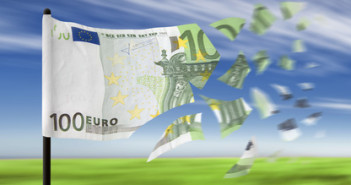EUR/USD received a boost from the better than expected German IFO Business Climate. This was enough to send the pair above a minor resistance line, but not enough to break 1.30, for the second time this week – a double top. Euro/dollar could not hold on to the gains and drifted back lower. As the US and the UK prepare for a long weekend, volume could already begin dropping. This could turn into a slow trading session to close the week, or could generate sharp moves on any surprising statement, after quite a volatile and wild week.
Here is a quick update on the technical situation, indicators, and market sentiment that moves euro/dollar.
EUR/USD Technical
- Asian session: Euro/dollar held on to gains above 1.29, before surging above this line on the German news. The pair peaked just above 1.2990, failing to reach 1.30.
Current range: 1.2880 – 1.2960.
Further levels in both directions:

- Below: 1.2880, 1.2840, 1.2800, 1.2750, 1.27, 1.2624 and 1.2587.
- Above: 1.2960, 1.30, 1.3030, 1.31, 1.3160 and 1.32.
- 1.2880Â could provide support on any fall.
- 1.30 is strengthening once again.
Euro pushes towards 1.29 as volatility continues – click on the graph to enlarge.
EUR/USD Fundamentals
- 6:00 German Final GDP: exp. 0.1%, actual +0.1%.
- 6:00 German GFK Consumer Sentiment: exp. 6.2, actual 6.5 points.
- 8:00 German IFO Business Climate: exp. 104.6, actual 105.7.
- 12:30 US Durable Goods Orders: exp. +1.6%, actual +3.3%. Core orders exp. +0.6%, actual +1.3%.
- 13:00 Belgian NBB Business Climate: exp. -13.4, actual -12.4 points.
For more events and lines, see the EUR/USD
EUR/USD Sentiment
- Good news from Germany: Germany’s No. 1 think tank, IFO,  surprised with a better than expected figure. The euro did react. The wide survey joins the confirmation of the growth figures and the better consumer sentiment. These numbers come against a series of weaker figures seen earlier, such as the PMIs that show that Germany is contracting. It is still too early to say if Germany continues growing in Q2, and it’s much harder to say positive things about the euro-zone as a whole.
- More positive news from the US: The US is seeing alternating weeks in economic data: after a weak Philly number and a jump in jobless claims, this week sees better than expected new home sales, a record low in continuing claims) and now a nice rise in durable goods orders. What is the bottom line? The Fed tends to be cautious.
- Bernanke sends euro on wild ride: US Federal Reserve Chair Bernanke triggered a big drama: He first stated that tightening monetary policy could hurt the economic recovery. The euro reacted by rising sharply, testing the 1.30 level, but this proved to be a short-lived move. Bernanke later said that if US economic data improved, a decision to scale back QE could be taken in the “next few meetingsâ€. This brought the euro back down in a hurry, Hints about tapering or no tapering from Fed officials will continue to rock the markets.
- Fed Minutes show split over QE: Overshadowed by Ben Bernanke’s testimony in Congress was the release of the minutes of the most recent FOMC policy meeting. Bernanke later said that if US economic data improved, a decision to scale back QE could be taken in the “next few meetingsâ€. This brought the euro back down in a hurry. It should be noted that the minutes relate to a meeting which took place at the beginning of May, in contrast to the fresh testimony of Bernanke on Wednesday.
- Japanese stock market crash: the reaction to the thought of QE tapering was a drop in US stocks, which was followed by a crash in Japan, of 7.32%. This put the Nikkei index in the spotlight. Moves in Japan will likely have an indirect impact on the euro in the weeks to come.



